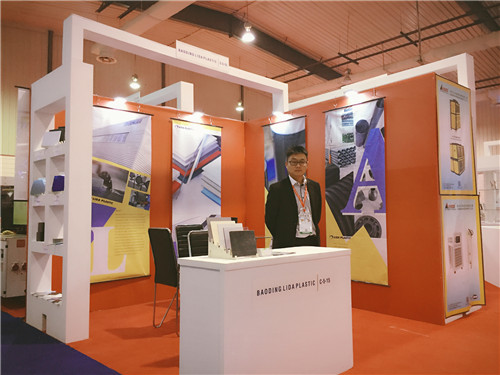نويابىر . 07, 2024 07:45 Back to list
Guidelines for High-Density Polyethylene Pipe Installation and Design in 2011
Understanding DR and HDPE Pipes A Comprehensive Overview
When it comes to modern plastic piping systems, High-Density Polyethylene (HDPE) pipes have emerged as a crucial component in various infrastructure projects. Specifically, the term “DR” stands for “Dimension Ratio,” which is a critical factor in understanding the performance and application of HDPE pipes. This article explores the significance of DR in HDPE pipes and their benefits in a myriad of applications.
What is HDPE?
High-Density Polyethylene (HDPE) is a type of thermoplastic made from petroleum. It is known for its high strength-to-density ratio compared to other plastics. HDPE pipes are common in many industries due to their durability, chemical resistance, and versatility. They are used in water supply systems, sewer systems, slurry applications, and more.
Understanding Dimension Ratio (DR)
The Dimension Ratio (DR) is defined as the ratio of the pipe’s outer diameter (OD) to its minimum wall thickness (t). It determines the pipe's pressure rating and is crucial for understanding its application in various projects. A lower DR number indicates a thicker wall, which can support higher pressures, whereas a higher DR allows for lighter installations but typically supports lower pressures.
For instance, a pipe with a DR of 17.6 has a calculated dimension where the outer diameter is 17.6 times the wall thickness. This ratio is essential for engineers and designers as it helps in selecting the right pipe for specific pressure requirements and environmental conditions.
The Importance of DR in HDPE Pipes
1. Pressure Rating The DR has a direct correlation with the pressure rating of HDPE pipes. Higher pressure applications require pipes with lower DR values, meaning a thicker wall that can withstand greater internal stresses. This is vital in applications such as water and gas distribution where the failure of a pipe can have catastrophic results.
dr 11 hdpe pipe

2. Installation Considerations The choice of DR affects the weight and handling of the pipes. HDPE pipe with a higher DR (thinner walls) is lighter and easier to transport and handle during installation, making it a preferred choice for many contractors, especially in vast networks where efficiency is crucial.
3. Cost-Effectiveness Opting for the right DR can lead to significant cost savings. For instance, using a suitable DR can minimize material costs while ensuring that the pipe is adequate for the necessary application. It is essential, however, to balance cost with performance to avoid potential failures in the field.
4. Environmental Resistance HDPE pipes are known for their resistance to corrosion and chemical damage, making them ideal for various applications. By correctly selecting the DR, the pipe can retain its integrity over time, especially in harsh environments.
5. Flexibility in Design The variety of DR options available means that engineers have the flexibility to adapt their designs based on specific project requirements. This adaptability ensures that the final piping system can efficiently meet the anticipated demands.
Applications of HDPE Pipes
HDPE pipes with appropriate DR ratings are widely used across multiple sectors
- Water Distribution Municipal water utilities often use HDPE pipes for potable water distribution due to their longevity and resistance to corrosion. - Sewer Systems HDPE is commonly utilized in sewer applications since it minimizes the risk of infiltration and exfiltration, reducing environmental impact. - Mining and Industry The robust nature of HDPE makes it suitable for transporting slurries and other industrial fluid applications. - Agriculture HDPE pipes are essential in irrigation systems, offering efficient water transfer with reduced maintenance needs.
Conclusion
In summary, the Dimension Ratio (DR) plays a pivotal role in determining how HDPE pipes perform across various applications. By understanding the significance of DR and its impact on pressure ratings, installation, cost, and environmental resistance, engineers and contractors can make informed decisions. The adoption of HDPE pipes continues to grow, thanks to their impressive characteristics and the flexibility they offer in design and application. As infrastructure needs become more demanding, HDPE pipes with carefully selected DR values will undoubtedly remain at the forefront of piping solutions.
-
High-Quality PPR Pipes and Fittings Durable ERA PPR & PVC PPR Solutions
NewsJul.08,2025
-
Black HDPE Cutting Board - Durable, Non-Porous & Food Safe HDPE Plastic Cutting Board
NewsJul.08,2025
-
High-Quality CPVC Panel Durable HDPE & PVC Panels Supplier
NewsJul.08,2025
-
Double PE Welding Rod Supplier - High Strength, Durable & Versatile Welding Solutions
NewsJul.07,2025
-
High-Quality PVC-O Pipe Supplier Durable 75mm PVC Pipe & Connections Leading PVC Pipe Company
NewsJul.07,2025
-
HDPE Drainage Pipe Supplier – Durable & Corrosion-Resistant Solutions
NewsJul.06,2025

